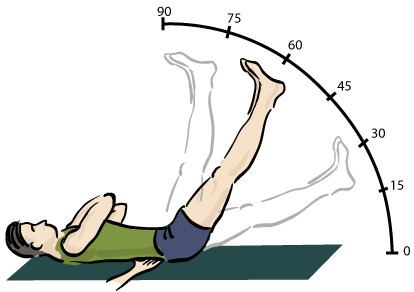 | ||
The straight leg raise, also called Lasègue's sign, Lasègue test or Lazarević's sign, is a test done during the physical examination to determine whether a patient with low back pain has an underlying herniated disk, often located at L5 (fifth lumbar spinal nerve).
Contents
Technique
With the patient lying down on his or her back on an examination table or exam floor, the examiner lifts the patient's leg while the knee is straight.
A variation is to lift the leg while the patient is sitting. However, this reduces the sensitivity of the test.
In order to make this test more specific, the ankle can be dorsiflexed and the cervical spine flexed. This increases the stretching of the nerve root and dura.
Interpretation
If the patient experiences sciatic pain when the straight leg is at an angle of between 30 and 70 degrees, then the test is positive and a herniated disc a possible cause of the pain. A negative test suggests a likely different cause for back pain.
A meta-analysis reported the accuracy as:
If raising the opposite leg causes pain (cross or contralateral straight leg raising):
Lasègue's sign
Lasègue's sign was named after Charles Lasègue (1816-1883). In 1864 Lasègue described the signs of developing low back pain while straightening the knee when the leg has already been lifted. In 1880 Serbian doctor Laza Lazarević described the straight leg raise test as it is used today, so the sign is often named Lazarević's sign in Serbia and some other countries.
